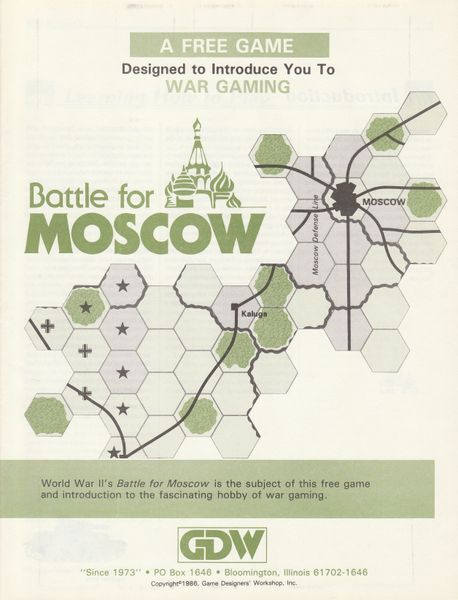Battle for Moscow (1986) Board Game
Battle for Moscow is a board game that was released in in 1986. It is a two-player game that simulates the intense battles that took place during World War II in the Soviet Union. Designed by James B. Byrne, this game focuses on the struggle for control of Moscow between the German and Soviet forces.
Game Components of Battle for Moscow
How To Setup Battle for Moscow
To set up the game, the Russians place their counters on predetermined hexes, while the Germans can set up their forces within a specified area. This setup mirrors the historical deployment of forces during Operation Typhoon. The game starts in September 1941, capturing the initial phases of the German offensive.
Gameplay Mechanics and Game Objective
Mechanics
Game Objective
Player Experience
**Battle for Moscow** is designed to be an introductory wargame, making it accessible and fun for new players. The game plays quickly, typically within an hour, and introduces key wargaming concepts such as unit movement, combat, and strategic planning. The asymmetrical gameplay, where Germans must advance swiftly and Russians need to employ delaying tactics, adds depth and realism.
Pros
Cons
Personal Thoughts on Battle for Moscow
**Battle for Moscow** is perfect for those new to wargaming, especially younger players or those looking for a quick, educational game. It successfully introduces core wargaming mechanics without overwhelming complexity. For experienced players, it serves as a nostalgic reminder of the simplicity and charm of early wargames. The game’s design ensures that it remains enjoyable and relevant, even decades after its initial release.
We are supported by our audience. When you purchase through links on our site, we may earn an affiliate commission, at no extra cost for you. Learn more.

